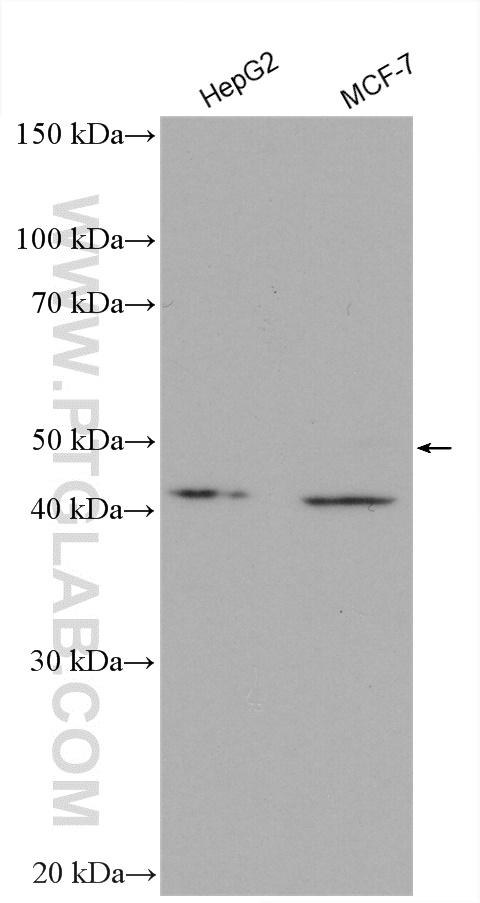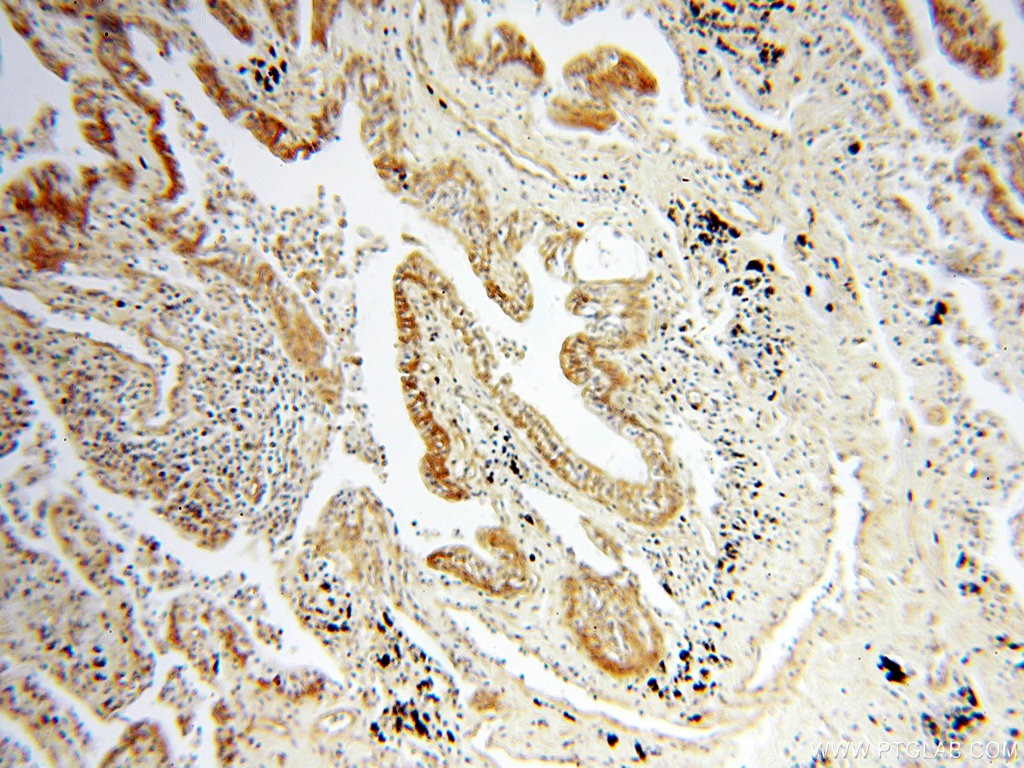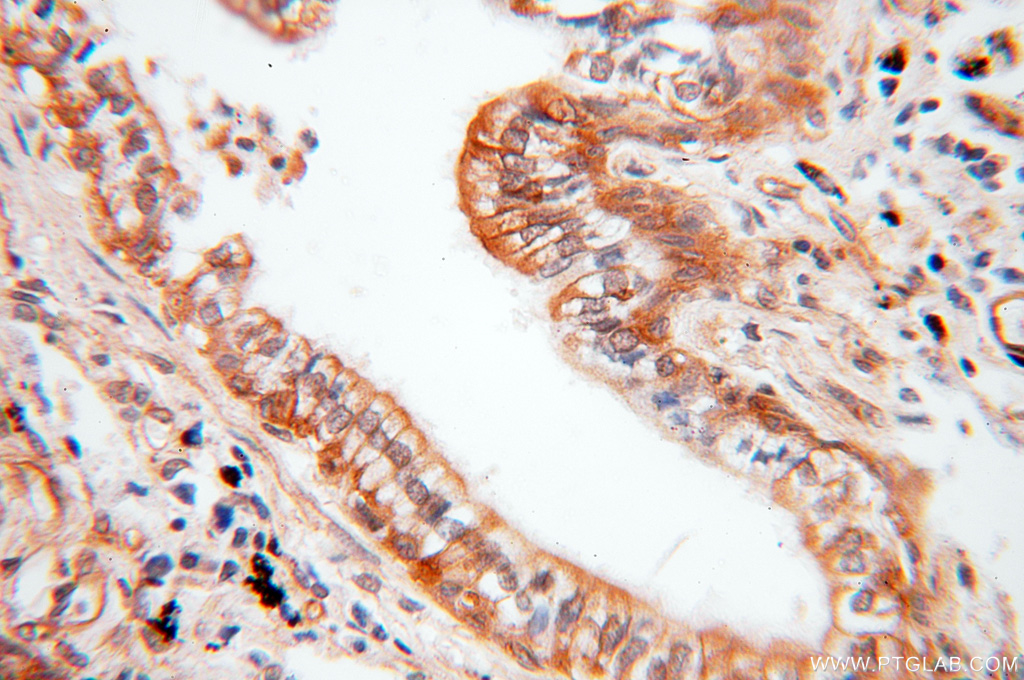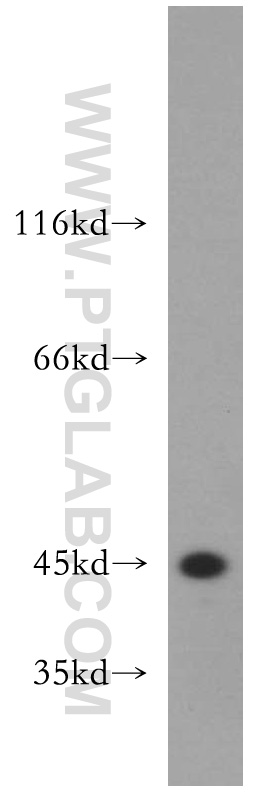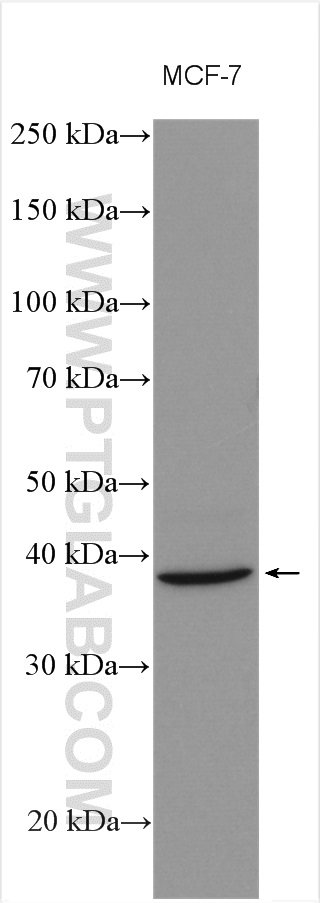CCNI2 Polyclonal antibody
CCNI2 Polyclonal Antibody for WB, IHC, ELISA
Host / Isotype
Rabbit / IgG
Reactivity
human and More (1)
Applications
WB, IHC, ELISA and More (1)
Conjugate
Unconjugated
验证数据展示
经过测试的应用
| Positive WB detected in | HepG2 cells, human brain tissue, MCF-7 cells |
| Positive IHC detected in | human lung cancer tissue Note: suggested antigen retrieval with TE buffer pH 9.0; (*) Alternatively, antigen retrieval may be performed with citrate buffer pH 6.0 |
推荐稀释比
| Application | Dilution |
|---|---|
| Western Blot (WB) | WB : 1:500-1:2000 |
| Immunohistochemistry (IHC) | IHC : 1:20-1:200 |
| It is recommended that this reagent should be titrated in each testing system to obtain optimal results. | |
| Sample-dependent, Check data in validation data gallery. | |
发表文章中的应用
| WB | See 1 publications below |
| IF | See 1 publications below |
产品信息
18822-1-AP targets CCNI2 in WB, IF, IHC, ELISA applications and shows reactivity with human samples.
| Tested Applications | WB, IHC, ELISA Application Description |
| Cited Applications | WB, IF |
| Tested Reactivity | human |
| Cited Reactivity | mouse |
| Immunogen | Peptide 种属同源性预测 |
| Host / Isotype | Rabbit / IgG |
| Class | Polyclonal |
| Type | Antibody |
| Full Name | cyclin I family, member 2 |
| Synonyms | CCNI2, cyclin I family, member 2, Cyclin I2 |
| Calculated Molecular Weight | 41 kDa |
| Observed Molecular Weight | 42 kDa |
| GenBank Accession Number | BC144417 |
| Gene Symbol | CCNI2 |
| Gene ID (NCBI) | 645121 |
| RRID | AB_10596930 |
| Conjugate | Unconjugated |
| Form | Liquid |
| Purification Method | Antigen affinity purification |
| UNIPROT ID | Q6ZMN8 |
| Storage Buffer | PBS with 0.02% sodium azide and 50% glycerol pH 7.3. |
| Storage Conditions | Store at -20°C. Stable for one year after shipment. Aliquoting is unnecessary for -20oC storage. |
背景介绍
实验方案
| Product Specific Protocols | |
|---|---|
| WB protocol for CCNI2 antibody 18822-1-AP | Download protocol |
| IHC protocol for CCNI2 antibody 18822-1-AP | Download protocol |
| Standard Protocols | |
|---|---|
| Click here to view our Standard Protocols |
